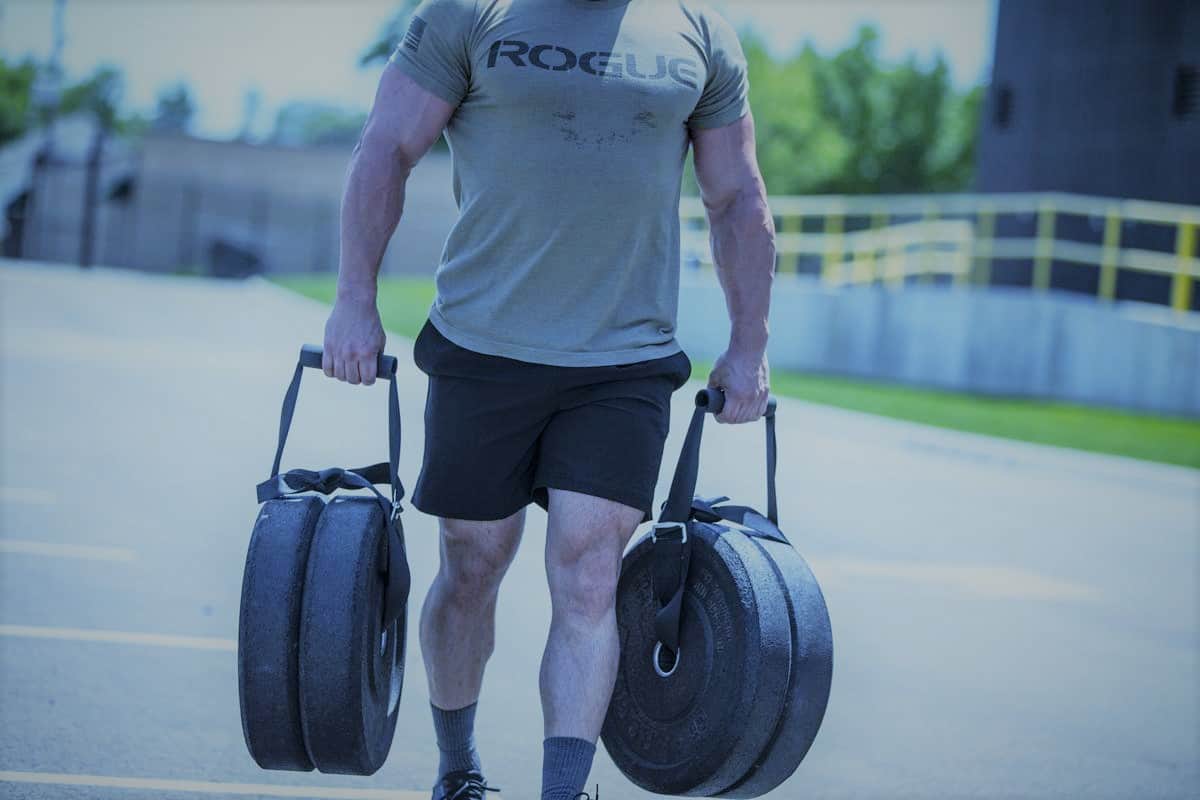A shoulder injury is one of the more common injuries in powerlifting. It’s also a common injury among weightlifters, tennis players, wrestlers, swimmers, baseball and softball players – you get the picture.
My theory? Well, shoulders are pretty fragile. And powerlifters bench press a lot. Many hurt themselves on a max bench, while others just don’t know how to bench safely.
This translates into a lot of high schoolers and slightly older guys hitting the gym with the sole purpose of trying to find out just how much they can bounce off their chest before it pins them to the bench.
Some of them go on to actually lift more than a few times, but poor form, either due to bad coaching or ignorance, can quickly lead to a shoulder injury.
Again, among more serious powerlifters, it’s the sheer weight itself that eventually gets to the shoulder. The shoulder girdle is exceedingly fragile, and it doesn’t take more than a little looseness with four wheels (over 400lbs) in your hands to cause your shoulder to slip out of place and create a tendon strain.
If you’ve previously injured yourself, then that doesn’t preclude you from benching. It does mean you have to figure out why you got hurt in the first place and rectify the issue. Here’s a quick guide to help you prepare yourself for the bench press again.
It Depends on How It Feels
First things first, go to a physiotherapist, or a physician.
Find someone with a medical degree and specialization in sports medicine,
osteopathy, or orthopedics. If you’re lucky and you live some place where it’s
an option, find a medical professional who works specifically with strength
athletes. I’m talking about Olympic weightlifters, strongmen, and powerlifters.
Then, get their earnest opinion first. Should you train to
bench press again? Most of them will likely say yes, as long as it’s been long
enough since your injury that it isn’t still healing. Some of them will say no,
in cases where your injury is so severe that you’ve actually severed or
irreversibly damaged some tendons, without seeking surgery.
You Don’t Have to Bench Press
Remember, the bench press really isn’t the end-all-be-all of
anything except a powerlifting total: it’s not a great metric of pushing power
(overhead pressing is more impressive), it’s not a great metric of general
strength (it uses the fewest muscles out of the big three), and it’s not a
great metric of general upper body strength (where’s the pull?). You’re not
missing out if you’re forced to retire the bench.
But in most cases, I’d wager you don’t have to. But you do have to take a break and find ways to train around the pain at first. Where the pain is coming from will better inform what kind of concessions you have to make.
If it’s deep inside the shoulder, under the anterior deltoid, and hurts when you cross your arm, chances are it might be a labrum injury. If it gets worse when you’re experiencing internal rotation with a load (like when you rest the bar far down the chest/on the abs during the bench, past the elbows, or the position your shoulders are in an upright row), then you might have an inflamed AC joint or a similar shoulder injury in the area. If it’s a limited range of motion in different directions, your bursae might be inflamed due to shoulder impingement. Here’s Jeff Cavaliere with a nice guide.
Make Sure You’re Pressing Properly
Most bench press injuries occur because the exercise is being done improperly, or because a mistake happened, from a misgroove to a slippery bench. Those injuries can be chalked up to freak accidents, and all these powerlifters can do is slowly built up strength after their shoulder injury and prepare themselves to start loading it again – but they’re also likely talking with coaches and medical professionals about their recovery road, rather than looking up solutions on Google.
You’ll want to take the bench on step-by-step to make sure
you aren’t aggravating your pain, especially if it managed to go away. Here are
a few things you should try:
Warm Your Back Up
Warm up with seated and/or single-arm rows and squeeze your scapulae. To squeeze your scapulae, try to basically hold a pencil with your shoulder blades. Doing a few easy sets of this before you bench will warm up your back and help you prepare to retract your shoulders better to prevent a future shoulder injury. It also helps to build stronger shoulders, and hammer them often.
Get a Good Bench
Make sure your bench is grippy, so your shoulders don’t slip out of place. If it isn’t, place a yoga mat over it. Keep the bench racked in a position where you can unrack it without losing tightness in the back. Better yet, get a friend to unrack your bar for all working sets. The extra time and effort to do so will be worth the saved shoulder injury.
Take Videos of Your Pressing
Your elbows should be in line with the bar. Elbows, not your forearm. The actual elbow joint should be perpendicular to the bar. If it isn’t, you may be tucking your elbows too much or going for a grip that’s too wide or narrow. Forget about trying to get the bar lower on your body or using your ‘lats’ to press – just go for a grip that lets you keep your upper arm in a 45-degree angle from your body at the bottom of the press, with the bar anywhere near your sternum, and your elbows directly below the bar. You can send your form video to a form check from a professional coach.
Switch to Floor Presses
Do floor presses if you’re feeling pain at the bottom of the
lift, no matter how you’re adjusting your form. You can do these until the pain
goes away, and you can inch your way back towards regular bench pressing.
Squeeze the Bar
If you’re having trouble due to pronation of the wrists, see if you feel less pain doing dumbbell bench pressing with a hammer grip. If that’s more comfortable, limited wrist mobility may be causing you to rotate your shoulders externally a bit more than they should. You can work on basic wrist stretches to help with that at first or consider switching permanently to a football bar bench press or even a reverse grip press. Just make sure to have a spotter.
Leverage the Arch
If you can’t arch properly, you may need to improve your thoracic extension. Incorporate three to five sets of cat and cow into every warmup, and press into your upper back with your heels on the floor (leg drive) to really pin your arch into the bench.
The reason you’ll want to arch other than to reduce your range of motion and get a bigger bench (in terms of weight) is because it gives your shoulders a little extra clearance to squeeze together, and lets you exaggerate the cue of getting your chest out and your back together.
Do More Prehab
Face pulls, upper back work, lots of rows, curls (to avoid elbow tendonitis from constant pronation), shoulder mobility, banded pull aparts, and more. Dean Somerset’s article on drills for healthy shoulders is a godsend, with even more great ideas.
Everyone likes to bench big because it’s what a lot of people pay attention to. However, don’t let that distract you from the fact that, just like in every other lift, you can get hurt with a simple little mistake. Don’t get complacent, adjust your position, work on your mobility, do your prehab, and bench responsibly.
Want to lift heavier and avoid injuries? 💪🔥
Download our FREE '5-Minute Warm-Up Routine for Maximum Lifting Performance' and get primed for every workout!
Click below to grab your copy now!👇
👉 Download the Free Guide




